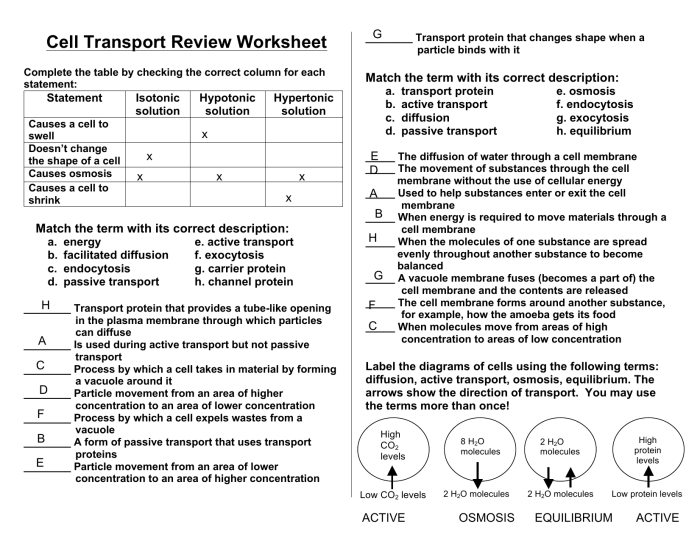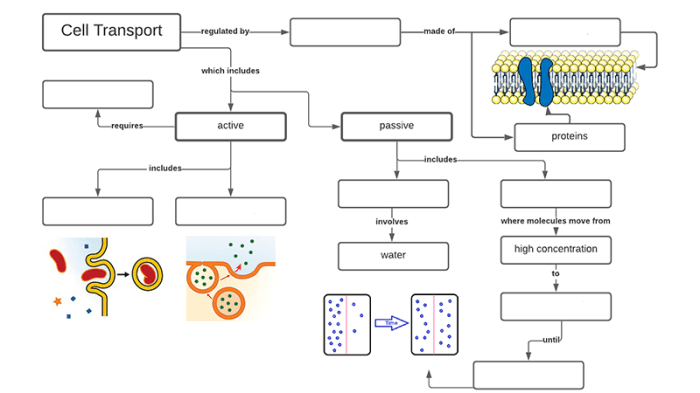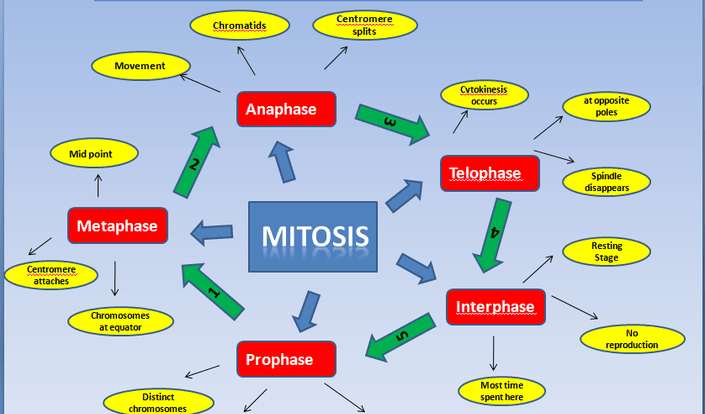Cell membrane and cell transport worksheet answers – Unveiling the mysteries of cell membrane and cell transport, this comprehensive guide provides the answers to your burning questions. Dive into the intricate workings of the cell membrane, the gatekeeper of cellular life, and explore the mechanisms that govern the movement of substances across this vital barrier.
Prepare to unravel the secrets of cellular dynamics as we embark on a journey through the fascinating world of cell membrane and cell transport.
Delve into the structure and composition of the cell membrane, unraveling the roles of its lipid bilayer, proteins, and carbohydrates. Discover the diverse types of cell transport, including passive transport, active transport, and facilitated diffusion, and delve into the mechanisms that drive these processes.
Understand the regulation of cell transport, exploring the factors that influence the movement of substances across the membrane.
Cell Membrane Structure and Composition
The cell membrane, also known as the plasma membrane, is a thin, flexible barrier that surrounds the cell and controls the passage of substances into and out of the cell.
Lipid Bilayer
The cell membrane is primarily composed of a lipid bilayer, which is a double layer of phospholipids. Phospholipids are molecules that have a hydrophilic (water-loving) head and a hydrophobic (water-hating) tail. The hydrophilic heads face outward, interacting with the aqueous environment inside and outside the cell, while the hydrophobic tails face inward, creating a nonpolar core.
Proteins
Embedded within the lipid bilayer are proteins that perform various functions, including:
- Transport proteins: These proteins facilitate the movement of molecules across the cell membrane.
- Receptor proteins: These proteins bind to specific molecules outside the cell, triggering a response inside the cell.
- Enzyme proteins: These proteins catalyze chemical reactions on the cell surface.
- Structural proteins: These proteins provide structural support to the cell membrane.
Carbohydrates
Carbohydrates, in the form of glycoproteins and glycolipids, are attached to the outer surface of the cell membrane. They form a glycocalyx, which protects the cell from mechanical damage and facilitates cell-cell recognition.
Types of Cell Transport

Cell transport is the movement of molecules across the cell membrane. There are three main types of cell transport:
Passive Transport
Passive transport is the movement of molecules from an area of high concentration to an area of low concentration, without the use of energy.
- Diffusion: The movement of molecules down a concentration gradient.
- Osmosis: The movement of water across a semipermeable membrane from an area of low solute concentration to an area of high solute concentration.
Active Transport
Active transport is the movement of molecules from an area of low concentration to an area of high concentration, against a concentration gradient, using energy.
- Ion pumps: These proteins use ATP to transport ions across the cell membrane.
- Carrier proteins: These proteins bind to specific molecules and transport them across the cell membrane.
Facilitated Diffusion, Cell membrane and cell transport worksheet answers
Facilitated diffusion is the movement of molecules across the cell membrane with the help of transport proteins. The molecules bind to the transport protein, which then changes shape to allow the molecules to pass through the membrane.
Mechanisms of Cell Transport: Cell Membrane And Cell Transport Worksheet Answers
Passive Transport
Diffusion is the movement of molecules down a concentration gradient. Molecules move from an area where they are more concentrated to an area where they are less concentrated. The rate of diffusion is determined by the concentration gradient, the size of the molecules, and the temperature.
Osmosis is the movement of water across a semipermeable membrane from an area of low solute concentration to an area of high solute concentration. Water molecules move through the membrane to equalize the solute concentration on both sides of the membrane.
Active Transport
Ion pumps use ATP to transport ions across the cell membrane. The ion pump binds to an ion on one side of the membrane and changes shape to transport the ion to the other side of the membrane. The ion pump then changes shape again to release the ion on the other side of the membrane.
Carrier proteins bind to specific molecules and transport them across the cell membrane. The carrier protein changes shape to allow the molecules to pass through the membrane. The carrier protein then changes shape again to release the molecules on the other side of the membrane.
Regulation of Cell Transport

Cell transport is regulated by a number of factors, including:
- Concentration gradient: The difference in concentration of a substance across the cell membrane.
- Temperature: The higher the temperature, the faster the rate of transport.
- pH: The pH of the environment can affect the activity of transport proteins.
Cells also use hormones and other signaling molecules to regulate transport. For example, insulin stimulates the uptake of glucose into cells.
Importance of Cell Transport
Cell transport is essential for maintaining homeostasis in the cell. It allows cells to take in nutrients, remove waste products, and regulate their internal environment.
Cell transport also plays a role in a variety of cellular processes, such as:
- Nutrient uptake: Cells use transport proteins to take in nutrients from the extracellular environment.
- Waste removal: Cells use transport proteins to remove waste products from the cell.
- Cell signaling: Cells use transport proteins to communicate with each other.
Questions and Answers
What is the primary function of the cell membrane?
The cell membrane serves as a selectively permeable barrier, regulating the movement of substances into and out of the cell, maintaining cellular integrity and homeostasis.
Explain the difference between passive and active transport.
Passive transport relies on the concentration gradient, moving substances from areas of high concentration to low concentration without energy expenditure. Active transport, on the other hand, utilizes energy to move substances against their concentration gradient, from areas of low concentration to high concentration.
What factors regulate cell transport?
Factors that regulate cell transport include the concentration gradient, temperature, pH, and the presence of hormones and other signaling molecules.
